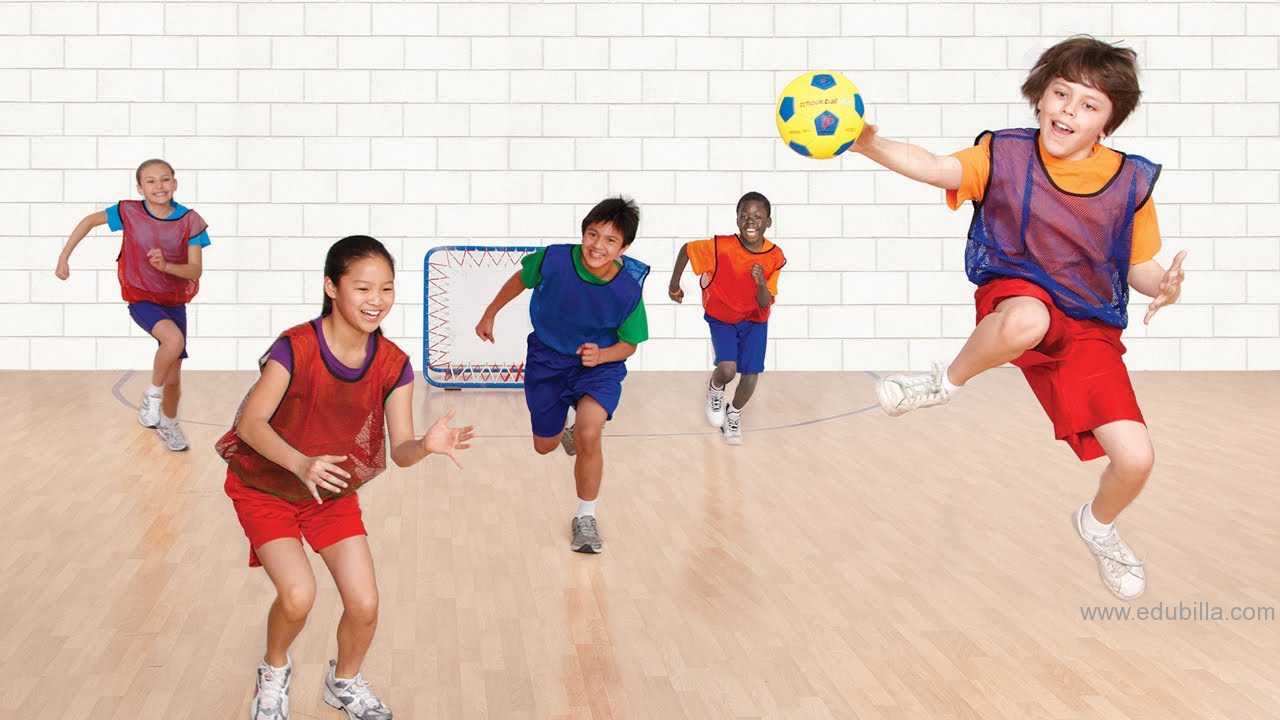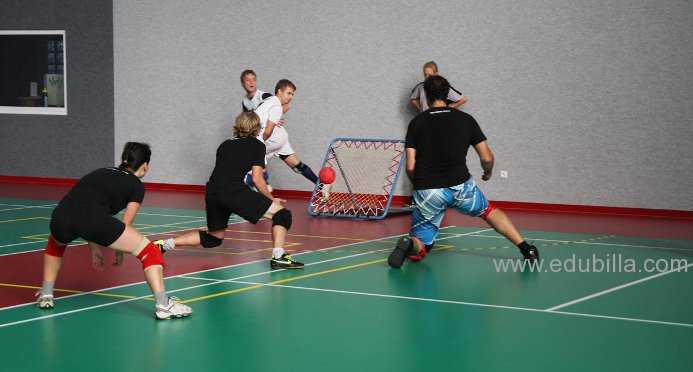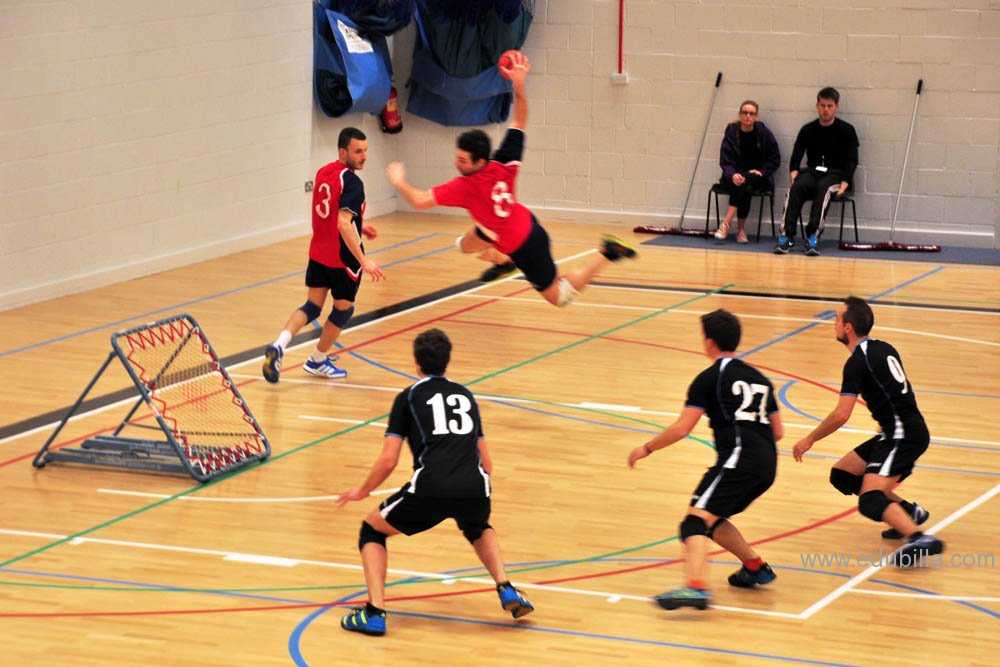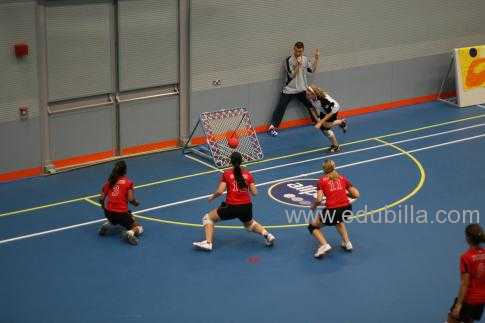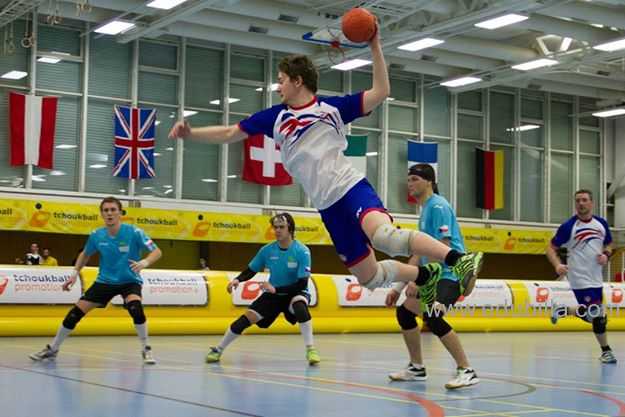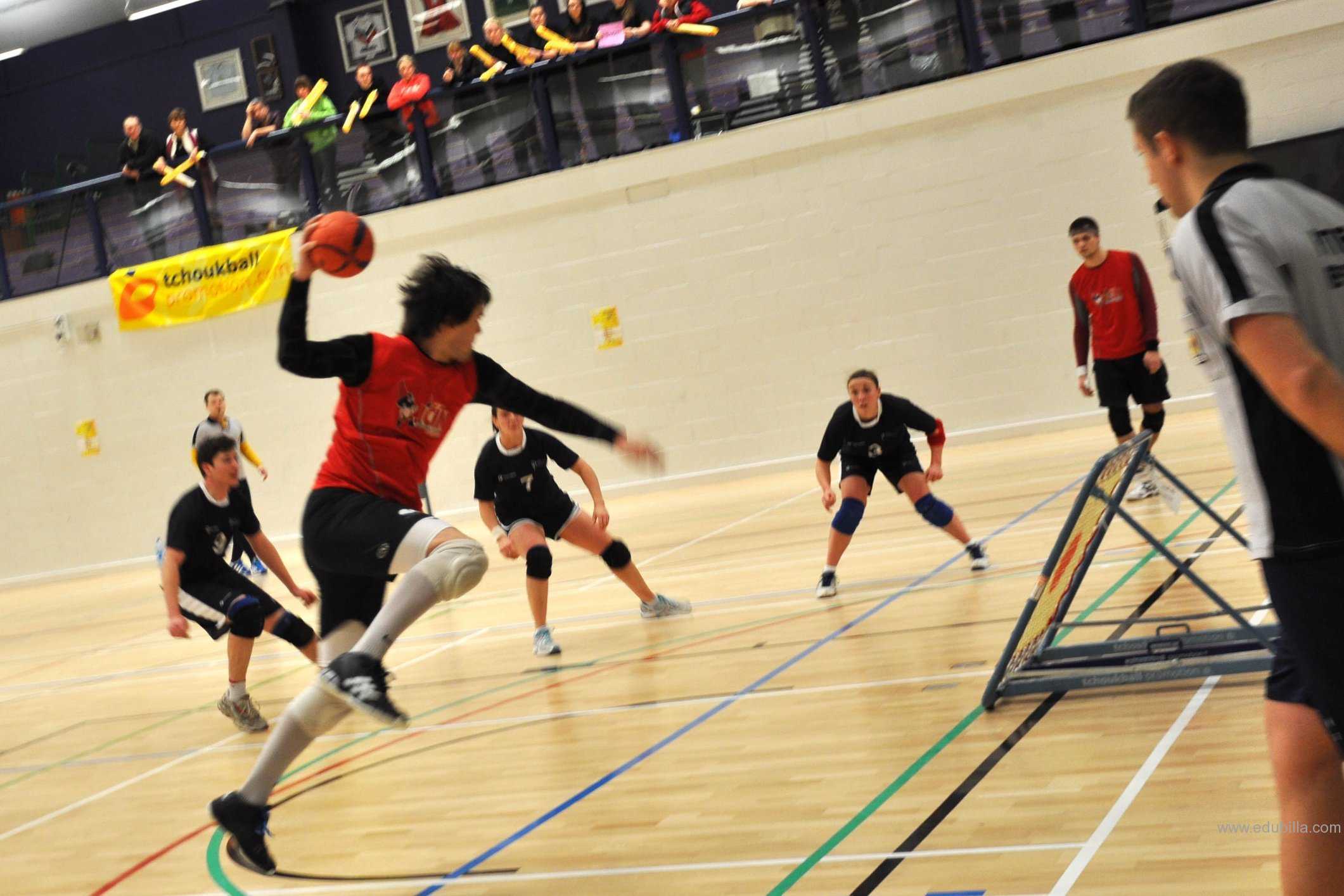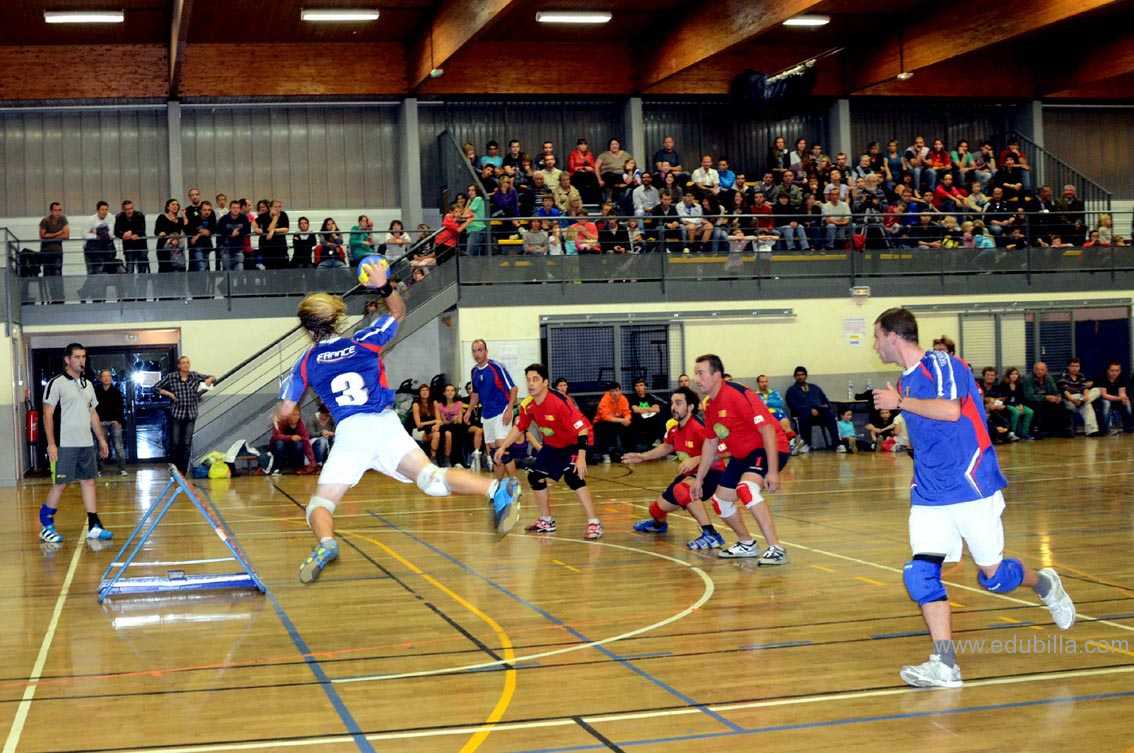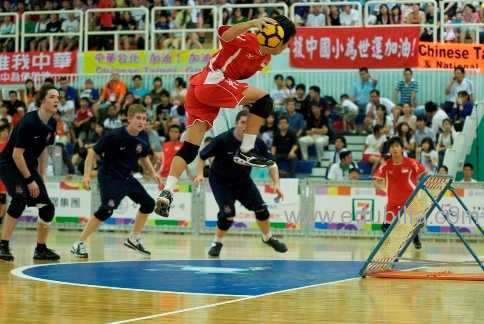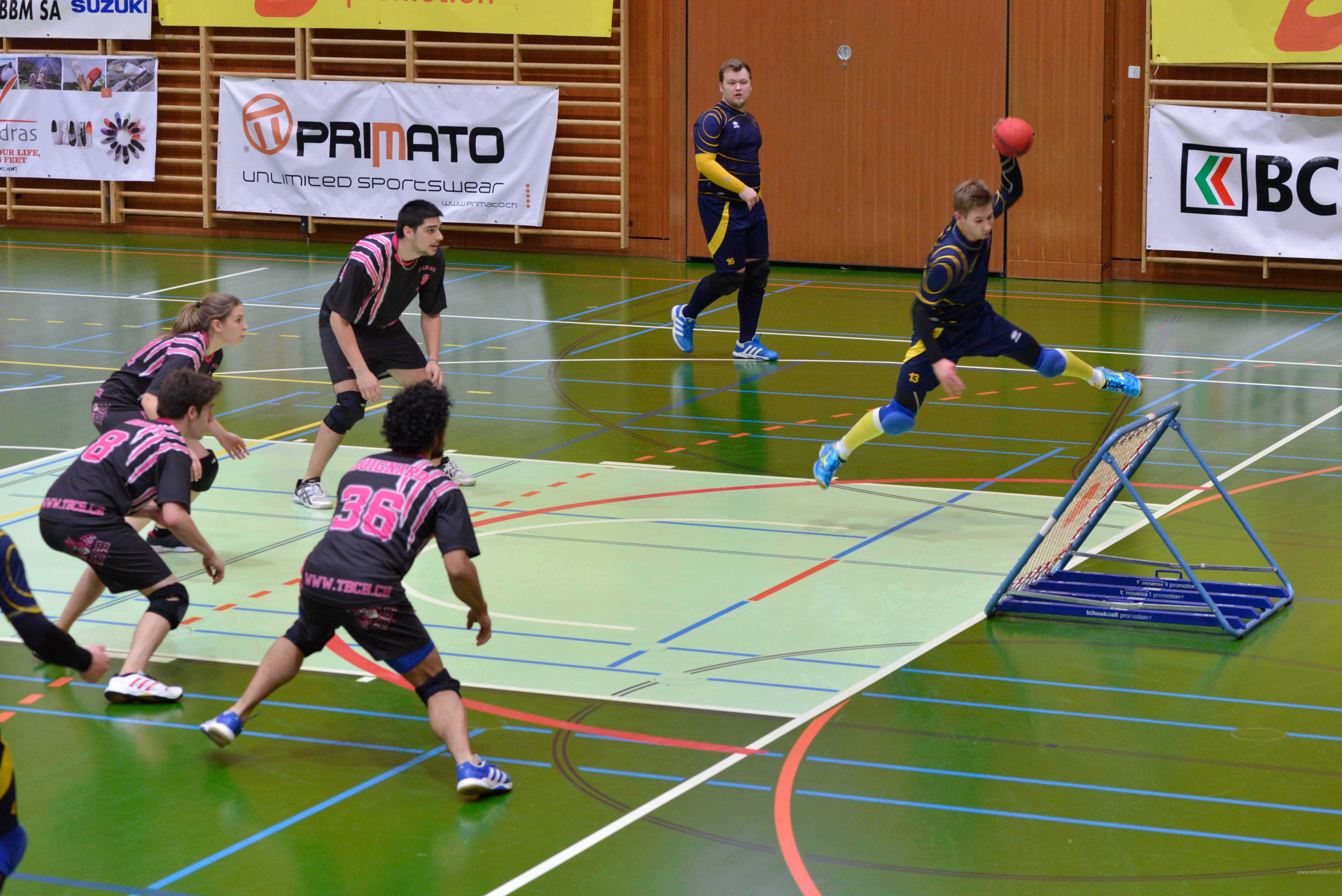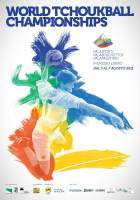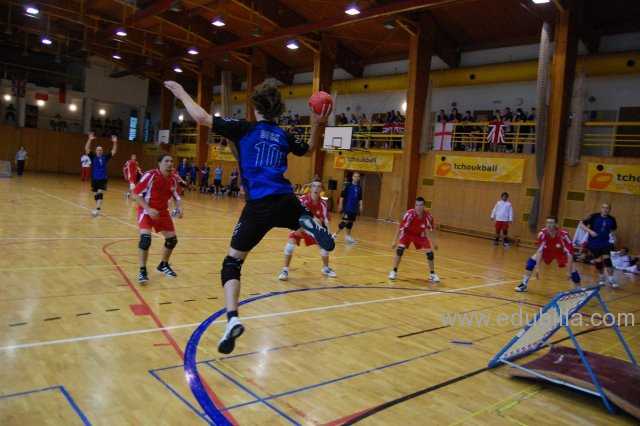
Overview Of Tchoukball
Tchoukball is the fastest hand ball sport in the world today.Tchoukball is an indoor team sport developed in the 1970s by Swiss biologist Hermann Brandt.Tchoukball is a team sport of 7 players that unites all key sporting skills; athleticism, concentration, respect for oneself and the opposition and teamwork. Here are the key values below to explain more.
Intensity:
Without physical contact between players or interception of the ball tchoukball players are free to express themselves whilst playing in any way permitted by the rules. At a higher level tchoukball is a very intense, extremely fast and skillful sport allowing individuals to express themselves as part of a team. The technical demands of tchoukball appeal to players who strive after beauty of play. Tchoukball games often see a point scored every 20-30 seconds and tchoukball players only get 1 point when we score!
Versatility:
Tchoukball was designed to be played in most situations and sporting arenas. Our standard version is played indoors in sports halls. However, tchoukball is entirely adaptable to the location. Beach tchoukball has flourished in the last 10 years and is now a major part of the FITB's work. But it doesn't stop there - tchoukball is played outdoors in many countries and can be adapted to be played in a swimming pool! We've also recently introduced wheelchair tchoukball and have started work with visually impaired athletes to expand tchoukball further.
Tactics:
Tchoukball is a genuine team sport. It is also totally unique. Beginners will never have played anything like tchoukball, not have experienced the diversity of demands it makes upon players. Tchoukball demands real teamwork as points are scored when the ball is distributed most effectively. Our players come in all shapes and sizes and the level of skill determines a player's success, not their strength. Good observation, constant attention by all participants, anticipation and intelligence of all facets of the game are required, as is good athletic ability.
Fair play:
Dr Hermann Brandt, the creator of tchoukball, wrote:
'The objective of human physical activities is not to make champions, but make a contribution to building a harmonious society'.
Tchoukball has a unique Charter which underpins the 'Spirit of the Game' so elusive in modern sport. Fair play and respect for the opposition is a fundamental part of the way in which tchoukball is played. All physical contact between players and interceptions are banned, enabling all players of differing shapes and sizes to play together.
Championships:
Tchoukball has become an international sport, played in Brazil, Canada, China, the Czech Republic, Great Britain, Hong Kong, India, Italy, Japan, Macau, Philippines, Singapore, Switzerland, Taiwan, and the United States. It is governed by the Féderation Internationale de Tchoukball (FITB, founded in 1971). Taiwan hosted the 2004 World Championships and won both the women's and junior championships, with the Swiss men winning the men's championship. The 2006 European Championships were held in Switzerland, with Great Britain taking both the Men's and Under-18's titles, while the hosts won the Women's event.
Scoring:
A player scores a point for his team if he bounces the ball off the rebound surface in such a manner that it cannot be caught by an opponent before it touches the floor.
- A player gives a point to the other team if:
- He misses the rebound surface when he shoots the ball.
- He makes the ball bounce out-of-bounds
- He shoots the ball and it bounces back, touching him.
- He sends the ball into the forbidden zone, before or after it hits the rebound surface.
Penalties:
A player commits a penalty if:
- He moves while dribbling the ball on the floor or juggling it in the air.
- He takes more than 3 footprints on the floor while in possession of the ball.
- He plays using parts of his body below his knees.
- He makes a fourth pass for his team.
- He makes contact with the floor out-of-bounds or in the forbidden zone while holding the ball.
- He drops the ball after it is passed to him.
- He voluntarily, or by error, catches a pass from the other team.
- He catches a ball off of the rebound surface that was shot by one of his teammates.
- He blocks his opponents from moving or stops them from freely passing the ball once they have gained possession.
Tchoukball in India:
"Indian Tchoukball Federation" is working in India. This Federation is affiliated to "Federation International De Tchouk Ball " & Asia Pacific Tchoukball Federation.
TchoukBall is getting popularity Day by Day in India. 20 States Play this game in India. It is not only an interesting game but a fast game also. India has successfully oraganised senior nationals, junior nationals and sub junior nationals for this game.
Game Rules
Court
- The court size that is generally used is 27 m × 16 m. However, there are variations to this such as in beach tchoukball where a court size of 21 m × 12 m is used.
- One rebound frame is placed at each end of the field of play
- In front of each frame, a D shaped semi-circle measuring 3 m in radius must be drawn; it defines the limits of the 'forbidden zone'
- The lines of the zones are considered part of the zone itself, e.g. the line marking the semicircle forbidden zone is considered part of the forbidden zone, while the line around the entire court is considered a part of the court
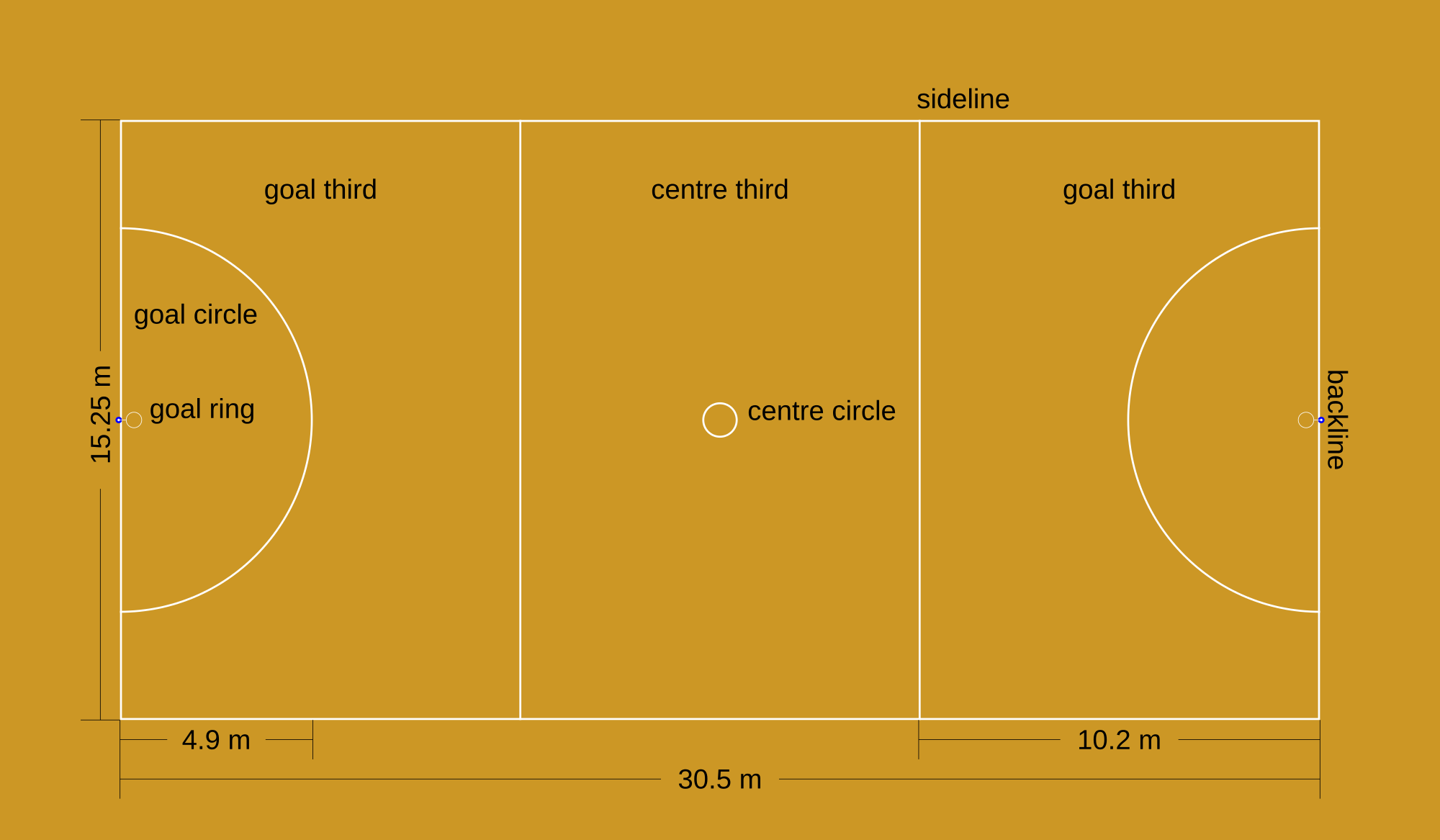
Ball
Depending on the category of players (Men/Women/U18/U15/u12), different sizes of balls are used ranging from a circumference of 54 cm to 60 cm and weighs between 325 grams to 475 grams.
Scoring
Two teams of 7 players each (men or women) compete to score points with the team with the most points at the end winning the game. When a team gains a point, control of the ball is transferred to the other team.
- In tchoukball either team can score at either end of the court.
- A point is scored when the ball rebounds after hitting either of the 2 frames and touches the ground outside the forbidden zone, any part of the defending player's body below the knees or touches the defending player while he is still in the forbidden zone
- A point is given to the non-attacking team when the attacking team shoots and misses the frame, or the ball rebounds outside the playing area (either out of the court or in the forbidden zone).
- If a shot is caught by the defending team, the defending team can proceed to attack immediately
Positions:
Each team comprises the following positions:
- 2 Right Wings
- 2 Left Wings
- 2 Forward Pivots (FP)
- 1 Centre Pivot (CP)
Each side of the court comprises a left shooter (Left Wing), right shooter (Right Wing) and an inner (FP), while the centre pivot usually stays near the middle of the court. The shooters are generally in charge of shooting although in some cases the inner can also take the shot. The inners are in charge of coordinating the first line defence while the centre pivot takes charge of the second line defence. However other formations include not using a centre pivot, the team would bypass the centre and throw full length court passes directly to the shooters/inners. This gives an extra first line defender or a dedicated second line defender.
Playing the game:
- The player can take 3 steps and is not allowed to bounce the ball on the ground between these steps.
- The attacking team cannot make more than 3 passes before shooting
- When a pass is dropped or not completed (i.e. the ball touches the ground), the other team gets possession
- The defending team cannot hamper the attacking one, and is a fully non-contact sport.
- Touching the ball with one’s feet or legs below the knee is forbidden
- The player with the ball is only allowed to hold the ball for 3 seconds or less
Equipments Need For Tchoukball
Frames:
Tchoukball has 2 'frames' positioned on the court like football goals which are strong rebound nets designed to withstand the force of a tchoukball thrown at high speed from close range. Frames are essential to play. Tchoukball is a 2-ended game so 2 frames are necessary for the proper match experience.

Tchoukballs:
A tchoukball is a special ball with a fixed weight that is designed for throwing at the frame. Balls that are too heavy could damage the net and too light will not make proper play possible.
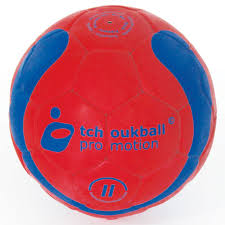
Knee Pads:
Knee pads are personal protection. A good pad will protect the knee from impact whilst defending or retrieving the ball and should cover around the knee as well as just the kneepads. Players at a higher level may also wear smaller knee pads on their elbows to ensure they are fully protected if diving for the ball.

History Of Tchoukball
Dr Hermann Brandt:
Tchoukball was created in Switzerland by Hermann Brandt, who was concerned by the numerous serious injuries among athletes resulting from sports prone to aggression and physical contact. He believed that sports should not only form champions, but also contribute to the creation of a better and more humane society.He designed tchoukball to contain elements of handball (it is played with hands, and the balls used are similar), volleyball (as the defending team must prevent the ball from falling) and squash (since there is a bounce).

Timeline of Tchoukball:
Aug 16 1970 Invention-Dr Hermann Brandt was an eminent Swiss biologist. It was through his work in practical application of scientific knowledge in the sphere of physical activities that the idea of Tchoukball had its foundation. After writing the book 'From Physical Education to Sport Through Biology', Dr Brandt presented his now famous paper 'Critical Scientific Review of Team Sports'. This won him the coveted award of 'Thulin Prize', presented at the University of Lisbon on August 16th 1970.
Jan 9 1971 Federation Internationale de Tchoukball Founded-Governed by the Féderation Internationale de Tchoukball (FITB) founded in 1971. Tchoukball has become an international sport, played in Brazil, Canada, China, the Czech Republic, Great Britain, Hong Kong, India, Italy, Japan, Macau, Philippines, Singapore, Switzerland, Taiwan, and the United States.
Dec 11 1970 Rules of Threes: *The player with the ball has 3 seconds before he must pass to a teammate or shoot. *The player with the ball is only allowed to take 3 steps before he must pass to a teammate or shoot.*The team with possession is allowed a max of 3 passes before shooting.*Either team may shoot at either rebound surface, but the two teams combined may not shoot at the same frame 3 times in a row.
Jul 11 1972 Growing Popularity-First world tchoukball championship held in 1984
Overall winner: Repbublic of China First emmergance in elementary schools and grew into middle, high school, and college populations. Today, Tchoukball is no longer just another new team game to be regarded with doubt and suspicion. It is being played in most parts of the world with much energy, and enthusiasm, varying levels of skill, but above all with a great deal of enjoyment.
Origin Of Tchoukball
Dr Hermann Brandt was an eminent Swiss biologist. It was through his research into the effects of physical activities that the idea of Tchoukball had its foundation. Dr Brandt noticed that many sports produced shocking injuries that stopped even the toughest of athletes from participating further. After discussing these concerns in the book 'From Physical Education to Sport Through Biology', Dr Brandt presented his now famous paper 'A Scientific Criticism of Team Games'. This won him the coveted 'Annual World Prize of the FIEP' (International Physical Education Federation).
First Tchoukball Club:
The First Paris Tchoukball Club is the first club in PARIS tchoukball.The Paris Club First TCHOUKBALL (PFTBC) is a sports association 1901 law designed to promote the physical development and physical and mental balance of man at all ages through the practice of tchoukball and develop the sport, provide access to sporting activities to young people through educational activities.
The Charter of Tchoukball:
Tchoukball of the foundations can be summarized in three main principles:
1.The game excludes any prestige research, both personal and collective.
2.The game has continued vigilance on the ball to other players.
3.The game is a social exercise through physical activity.
The development of International Tchoukball:
- 1970-Dr Hermann Brandtinvented Tchoukball.
- 1971/02/27-The first country founded National Tchoukball Federation.
- 1971/04/18-The second country founded National Tchoukball Federation.
- 1971/06/05-International Tchoukball Federation was founded.
- 1971/10/31-The 1st Annual International Tchoukball championship. There were four teams from Switzerland, France and the UK three countries attending the game. France beat Switzerland with 53 to 49 and won the champion at “Centre sportif du Bout-du-Monde”.
Governing Bodies
International Federation of Tchoukball:
The International Federation of Tchoukball (FITB) is an international association of national federations tchoukball. Founded in 1971, currently has 13 member associations and 22 other countries in which it operates.
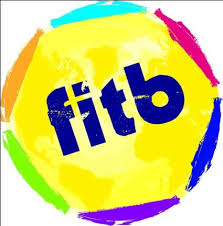
Small historic :
1971: Foundation FITB. Two members of associations: the Switzerland and France.
1972: The United Kingdom joined the FITB.
1976: First international tournament between the three member associations.
1977: Introduction of tchoukball in Taiwan. Sport creates an exceptional craze.
1984: First World Championship tchoukball in Taiwan.
1998: Introduction of tchoukball in Brazil.
2009: tchoukball will make his second appearance in the World Games, to be held in Kaohsiung (Taiwan).
The FITB Today:
The FITB Today has a much stronger presence than ever before. There are more than 52 countries in 6 continents currently with FITB representatives working to promote and teach tchoukball. The FITB has more than 36 official national member associations in 4 continents; Europe, Asia, Americas and Africa.
There are inter-continental Championships for Asian and European countries held every other years (even years), and a World Championships held every four years (odd years). Thousands of schools all over the world have been exposed to tchoukball.
International Competitions:
- World Championships Tchoukball
- World Championships beach tchoukball
World Games:
- Creating tchoukball European Championships
- Creating tchoukball Asian Championships
- South American Championships Tchoukball
To Visit FITB Click Here
Awards Related To Tchoukball
1)Tchoukball UK - Awards
2)Portsmouth Tchoukball Club Awards
3)Singapore Polytechnic Excellence Awards:
The annual Excellence Awards Ceremony is organised by the Department of Student Development with an aim to recognise outstanding achievements, talents and contributions demonstrated by our students throughout the year in the areas of co-curricular activities covered in the four key pillars of Arts, Community Service, Leadership and Sports.
Sample Documents Of Tchoukball
-Viswanathan Anan


